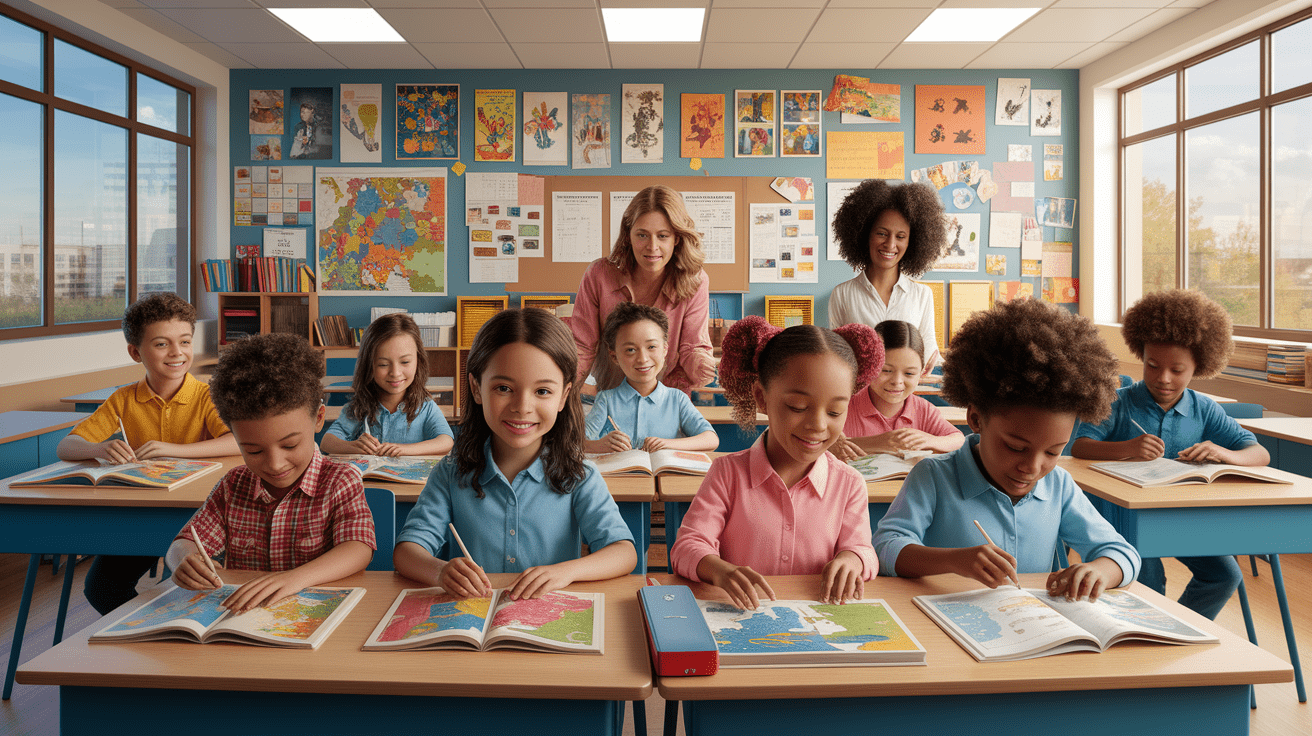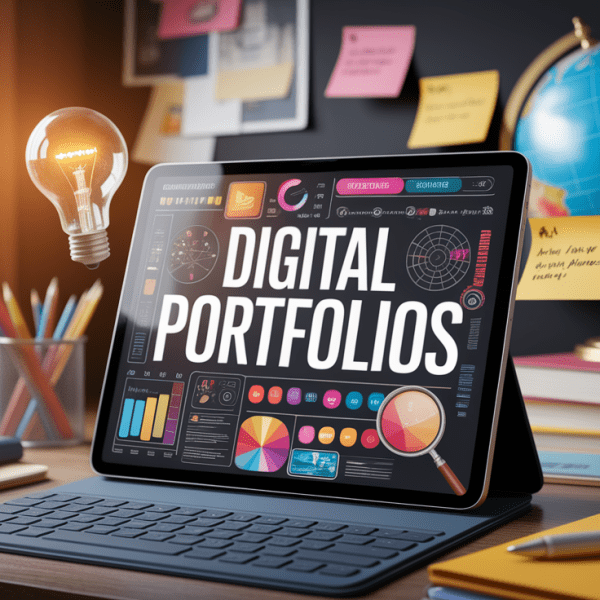Introductory Spotlight: Empowering Diverse Learners from Day One
Picture this: You walk into your classroom and see 25 unique faces, each carrying stories, traditions, and perspectives that could transform your teaching forever. What if I told you that these diverse backgrounds aren’t challenges to overcome, but incredible assets waiting to be unlocked? Welcome to the exciting world of culturally responsive lesson planning!

Culturally Responsive Education (CRE) isn’t just another educational buzzword—it’s a game-changing approach that centers students’ cultural backgrounds, lived experiences, and identities as vital components of teaching and learning. Think of it as moving beyond superficial inclusivity to create safe, equitable learning environments where every student feels recognized, valued, and empowered.
But what exactly is culturally responsive lesson planning? Simply put, it’s the art of weaving your students’ rich cultural tapestries into every aspect of your curriculum. When you understand what makes an effective lesson plan, you can then elevate it by incorporating culturally responsive elements that speak directly to your learners’ hearts and minds.
The beauty of Culturally Responsive Teaching (CRT), developed by Geneva Gay in 2000, lies in its practical application. It uses students’ customs, perspectives, and experiences as powerful tools to enhance engagement and retention. Meanwhile, Zaretta Hammond’s framework takes it a step further, emphasizing how we can recognize students’ “cultural displays of learning” and use their cultural knowledge to scaffold new concepts.
Building Cultural Awareness: Getting to Know Your Students
Ready to become a cultural detective? The first step in creating culturally responsive classrooms is developing deep cultural awareness of your students. This isn’t about making assumptions—it’s about genuine curiosity and respect for the diverse learners in your classroom.

Core Principles That Guide Us
Let’s start with the foundational principles that make culturally responsive pedagogy so powerful:
- Student-Centric Learning: Recognizing diverse cultural narratives as assets rather than obstacles. Your students’ backgrounds aren’t barriers—they’re bridges to deeper learning!
- Cultural Identity Validation: Countering systemic inequities by actively valuing students’ heritage in academic spaces. Every tradition, language, and perspective matters.
- Critical Consciousness: Teaching students to analyze and challenge power structures affecting their communities, empowering them to become change agents.
One fantastic way to begin this journey is through engaging ‘All About Me’ activities that encourage students to share their backgrounds and experiences. These activities naturally promote self-discovery and community building in culturally inclusive ways.
Getting to Know Your Cultural Landscape
Here’s where the magic happens! Start by creating opportunities for authentic cultural exchange in your classroom. Consider these strategies for supporting students from various cultural backgrounds:
- Family Partnership Surveys: Reach out to families to understand home traditions, languages spoken, and cultural celebrations
- Student Voice Circles: Regular discussions where students share cultural practices, family stories, and community experiences
- Cultural Asset Mapping: Document the incredible diversity of knowledge, skills, and perspectives your students bring
Remember, this process is ongoing! Cultural competent teaching requires continuous learning and genuine relationship-building with your students and their families.
Strategies for Culturally Responsive Lesson Design
Now comes the exciting part—transforming your lesson planning process! Let’s explore practical strategies for creating culturally responsive classrooms that celebrate diversity while maintaining high academic standards.

Curriculum Design That Celebrates Diversity
When it comes to curriculum design, think beyond the textbook. Here’s how to integrate cultural diversity into lesson planning effectively:
- Diverse Texts and Resources: Select materials that reflect not only your students’ backgrounds but also global cultures. Include literature, historical accounts, and scientific contributions from various cultural contexts.
- Relevant Project-Based Learning: Align tasks with real-world challenges relevant to students’ lives and communities. This approach makes learning meaningful and applicable.
- Anti-Bias Frameworks: Regularly analyze your content for stereotypes and ensure lessons align with equity goals.
Powerful Instructional Techniques
The key to successful culturally responsive teaching lies in selecting effective instructional strategies that honor diverse learning styles and cultural approaches to knowledge:
- Inquiry-Based Learning: Frame lessons around questions derived from students’ interests or community issues. This approach naturally incorporates asset-based pedagogy.
- Peer Collaboration: Encourage sharing diverse perspectives through group projects, Socratic seminars, and cultural exchange activities.
- Differentiated Instruction: Adapt your teaching methods to accommodate different cultural learning preferences and communication styles.
Supporting English Language Learners
For classrooms with ELLs (English Language Learners), culturally responsive teaching becomes even more crucial. Learn how to integrate ELD standards effectively while honoring students’ linguistic heritage. This dual approach supports language development while validating cultural identity.
Examples of Culturally Relevant Activities
Looking for concrete examples? Here are culturally relevant activities for different subjects:
- Mathematics: Explore mathematical concepts through cultural art patterns, traditional games, or community problem-solving scenarios
- Science: Investigate environmental issues affecting students’ communities or study traditional ecological knowledge
- Language Arts: Include diverse authors, oral storytelling traditions, and multilingual poetry
- Social Studies: Center multiple perspectives on historical events and include local community history
Assessment and Reflection: Closing the Equity Loop
How do you know if your culturally responsive approach is working? Assessment in culturally responsive classrooms looks different from traditional methods—and that’s exactly the point!

Culturally Responsive Assessment Strategies
Move beyond one-size-fits-all testing with these equitable teaching practices:
- Multiple Ways of Knowing: Value oral traditions, storytelling, artistic expression, and collaborative knowledge-building alongside written assessments
- Portfolio-Based Assessment: Allow students to showcase learning through diverse formats that reflect their cultural strengths
- Self-Reflection and Goal Setting: Encourage students to assess their own cultural learning and set goals for growth
Continuous Improvement Through Reflection
Regular reflection is essential for developing culturally competent teaching practices. Ask yourself:
- How are my students responding to culturally relevant curriculum content?
- What cultural assets am I still missing or underutilizing?
- How can I better support the social-emotional growth of all my learners?
- Where do I need additional professional development for culturally responsive teaching?
Addressing Implementation Challenges
Let’s be honest—implementing culturally responsive pedagogy isn’t without its challenges. Common barriers include:
- Tokenistic Inclusion: The risk of superficially adding cultural elements without meaningful curricular reform
- Resource Gaps: Limited access to diverse materials or funding for CRT-aligned programs
- Cultural Competence Development: The ongoing need for teacher training and self-awareness
Remember, this is a journey, not a destination. Every step you take toward greater inclusivity in education makes a difference!
Finale: Inspiring an Inclusive Future Classroom
You’ve made it this far, which tells me you’re committed to creating transformative learning experiences for your students. The benefits of culturally responsive pedagogy extend far beyond test scores—though research shows it boosts those too!
When you implement culturally sustaining pedagogy, you’re not just teaching subjects; you’re:
- Increasing Student Engagement: Students connect academic material to personal experiences, dramatically boosting motivation
- Improving Academic Achievement: Culturally relevant curricula bridge gaps between home and school, leading to higher outcomes
- Supporting Social-Emotional Growth: Students develop resilience and self-esteem when their backgrounds are acknowledged and celebrated
The future of education is inclusive, equitable, and culturally responsive. By designing lesson plan templates for diverse learners and consistently applying these principles, you’re contributing to a educational revolution that honors every student’s potential.
Your Action Plan
Ready to transform your teaching practice? Start with these actionable steps:
- Conduct a cultural audit of your current curriculum and improve your lesson planning process to include culturally responsive elements
- Build authentic relationships with students and families to understand their cultural assets
- Seek professional development opportunities focused on diversity, equity, and inclusion (DEI)
- Connect with community organizations to ground your lessons in authentic, local contexts
- Reflect regularly on your practice and celebrate small wins along the way
Remember, creating culturally responsive classrooms is both an art and a science. It requires intentionality, creativity, and a genuine commitment to seeing every student as a whole person with valuable contributions to make. Your classroom can become a space where all students thrive academically while maintaining pride in their cultural identities.
The diverse learners in your classroom are waiting for you to unlock their full potential. Are you ready to be the teacher who makes that difference? Your journey toward culturally responsive teaching starts now—and your students will be the ultimate beneficiaries of this important work!




